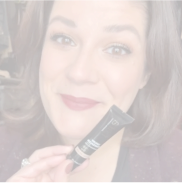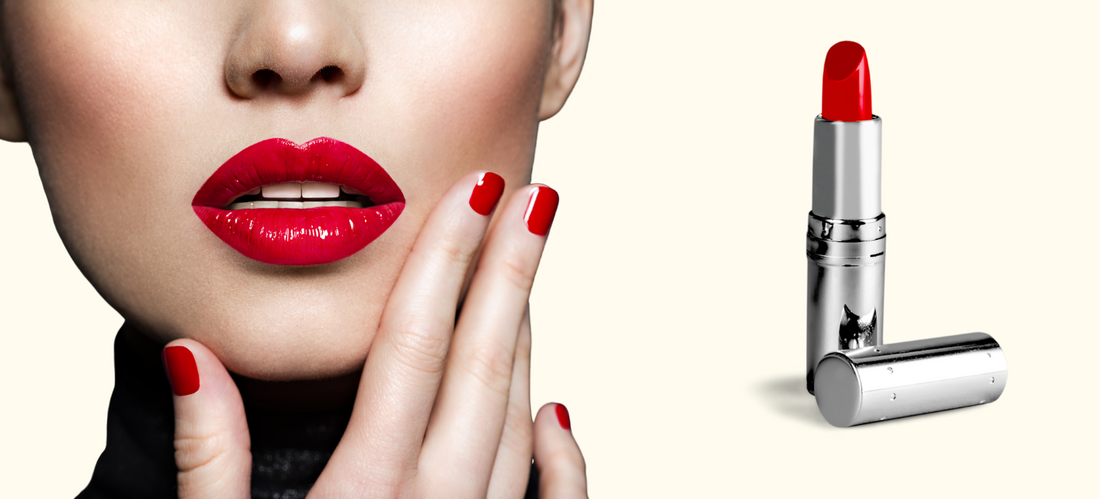Lipstick stands as one of the most impactful makeup products in your beauty arsenal. A simple application can dramatically alter your look and even boost your mood. But ensuring that your lipstick stays impeccable throughout the day presents its own set of challenges.
One such obstacle is the dreaded lipstick bleed, where the product seeps into the fine lines around your lips, creating an untidy appearance. With this in mind, let's help you mitigate this issue and ensure a flawless lip look.
Exfoliate Your Lips
One of the most fundamental steps in achieving the perfect lip look involves preparing your lips for application. A smooth surface is essential for any lip product to adhere properly. Exfoliating your lips can remove dead skin cells, allowing your lipstick to apply more smoothly. A gentle lip scrub can work wonders in this department. You can either purchase a commercially available scrub or make your own at home with natural ingredients like sugar and olive oil.
Moisturize Your Lips
Once you've exfoliated, the next immediate step involves hydrating your lips. Lipstick, particularly matte formulations, can be quite drying. Hydrated lips can drastically reduce the likelihood of your lipstick bleeding throughout the day. Therefore, make sure to apply a good quality lip balm prior to your lipstick. It's essential, however, to remove excess lip balm by lightly blotting your lips with a tissue. This prevents the lipstick from sliding off or appearing patchy.
Use a Lip Primer
Primers aren't just for your face or eyes; a good lip primer can make a significant difference in how your lipstick wears. A lip primer acts as a foundation for your lip color, helping to create a uniform base. Additionally, it can lock in the lip color and deter it from bleeding or flaking. It is advisable to apply primer to clean, dry lips for maximum impact.
Apply Lip Liner
Lip liner can function as a fence that keeps your lipstick from straying beyond your lips. When selecting a liner, you have two main options: pick a shade that matches your lipstick for a coherent look, or use a nude or peach highlighting pencil if you wish to avoid additional color. Outline the natural rim of your lips with gentle strokes, being cautious not to over-extend the lines.
Blot Your Lips
After you've applied your chosen lipstick, take a moment to blot. Press a tissue lightly against your lips to absorb any surplus product. This action can prevent the product from migrating into any fine lines or wrinkles around your mouth. Blotting is especially useful when you are using high-pigment or liquid lipsticks, as these formulas tend to be more susceptible to bleeding.
Use a Setting Powder
Another step to prevent lipstick from bleeding involves setting your lipstick with a translucent powder. A large fluffy brush works well for this. Lightly dust your lips with the setting powder, focusing particularly on the edges. The setting powder can absorb any excess moisture, securing your lip color and minimizing the risk of it bleeding.
Layer Your Lipstick
If you need your lipstick to last for an extended period, layering can prove beneficial. Apply a thin coat of lipstick, blot your lips, and then reapply. This double-layering technique increases the staying power of your lip color.
Type of Lipstick Matters
Finally, keep in mind that the formula of the lipstick you choose also plays a role in how well it will stay put. Matte and satin formulations typically offer a lesser chance of bleeding when compared to their glossy or balm-like counterparts. If you do encounter bleeding despite taking precautions, a quick fix involves using a makeup wipe to erase the feathered edges and then touching up with some setting powder around the mouth area.

What Are Some Common Causes of Lipstick Bleeding?
Lipstick bleeding, often referred to as feathering, occurs when lipstick migrates beyond the lip line or smears at the corners of the mouth. This is not just a cosmetic inconvenience but can also be an interruption to one's day, as you may need to frequently check your appearance and make corrections. Understanding the common causes can be the first step in prevention and effective management.
Fine Lines & Wrinkles
Fine lines and wrinkles around the lips are one of the most common reasons for lipstick bleeding. As people age, these fine lines naturally form and can act as small channels, directing the lipstick away from where it was initially applied, especially during activities like eating or talking. This is often a concern for older individuals but can be managed through proper skin care and specific makeup techniques designed to mitigate this issue.
Dry or Chapped Lips
Another common cause is having dry or chapped lips. When lips lack moisture, they may have an uneven texture, characterized by peeling or flaking. This textured surface can make it difficult for lipstick to adhere uniformly, leading to splotches that are more susceptible to bleeding. The condition of your lips can, therefore, play a significant role in how well your lipstick stays put.
Wrong Usage of Lip Balms & Lip Products
While lip balm is a beneficial product for maintaining lip health, excessive use right before applying lipstick can interfere with how well the lipstick adheres to the lips. The slippery surface created by too much lip balm can make it easier for lipstick to slide out of place, thus increasing the chances of bleeding. Therefore, it's advised to blot away any excess balm before applying your lipstick.
Avoiding Lip Liner or Concealer
Omitting lip liner or concealer is another reason you may experience this issue. Lip liners create a physical barrier that helps keep the lipstick within the lip line. Concealers or lip primers serve to even out the lip's surface, providing a base that can help lipstick adhere better. Skipping these steps can leave your lips vulnerable to feathering.
Drinking Through a Straw
Drinking through a straw might seem harmless, but it can contribute to lipstick bleeding, particularly with lipsticks that aren't formulated for long-lasting wear. The repeated action of pressing your lips against the straw can cause the product to shift and potentially bleed.
The Type of Lipstick
The type of lipstick used also has an influence. Glossy and balm-like formulas offer more slip, making them prime candidates for bleeding. Matte and satin formulas, on the other hand, are designed to stay in place for longer periods, reducing the risk of feathering.
Skin Pigmentation
Lastly, redness around the lips can sometimes be mistaken for lipstick bleeding. This is where the natural pigment or redness of the skin around the lips shows through, giving the appearance of smudged or smeared lipstick. It's essential to differentiate between actual lipstick bleeding and skin redness to determine the appropriate corrective action.
How To Correct Lipstick Bleeding On-the-Go
Despite best efforts, sometimes lipstick does find a way to bleed. If you find yourself in such a situation, there are quick and effective ways to correct it. You might be concerned about how you appear to others, but often the issue isn't as noticeable as you think. Nevertheless, it's always good to know how to rectify it.
Your first move should be to use a makeup wipe to gently remove the stray lipstick from the edges of your lips. This action will erase any smudging and give you a clean slate to work from. Follow this by applying a thin layer of concealer or foundation around your lip line using a clean lip brush. This not only covers any remaining evidence of lipstick bleeding but also forms a new barrier that helps prevent the same issue from occurring shortly after. Finally, use a lip brush to touch up your lipstick and redefine your lip contours.
It's worth mentioning the choice between foundation and concealer for this corrective action. Concealer generally offers higher coverage, making it effective in camouflaging any remaining smudges. If you are dealing with red lipstick that has bled, opting for a yellow-based concealer can provide additional benefits, as it helps neutralize the redness. However, some people prefer using a green color corrector beneath their foundation or concealer. This is another effective option but can be more time-consuming and may appear unnatural if not blended well. Therefore, it might be best for those who prefer a simpler, more straightforward approach to stick to concealer or foundation alone.
Conclusion
To sum up, various steps and techniques can be utilized to prolong the wear of your lipstick and prevent it from bleeding. By incorporating these into your beauty routine, you'll not only achieve a polished look but also gain the confidence that comes from knowing your lipstick will stay in place.
Want to empower yourself with resources to look and feel better? Read more articles on our blog.


